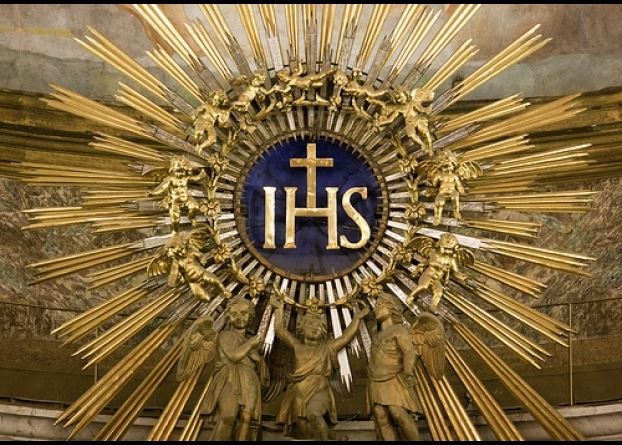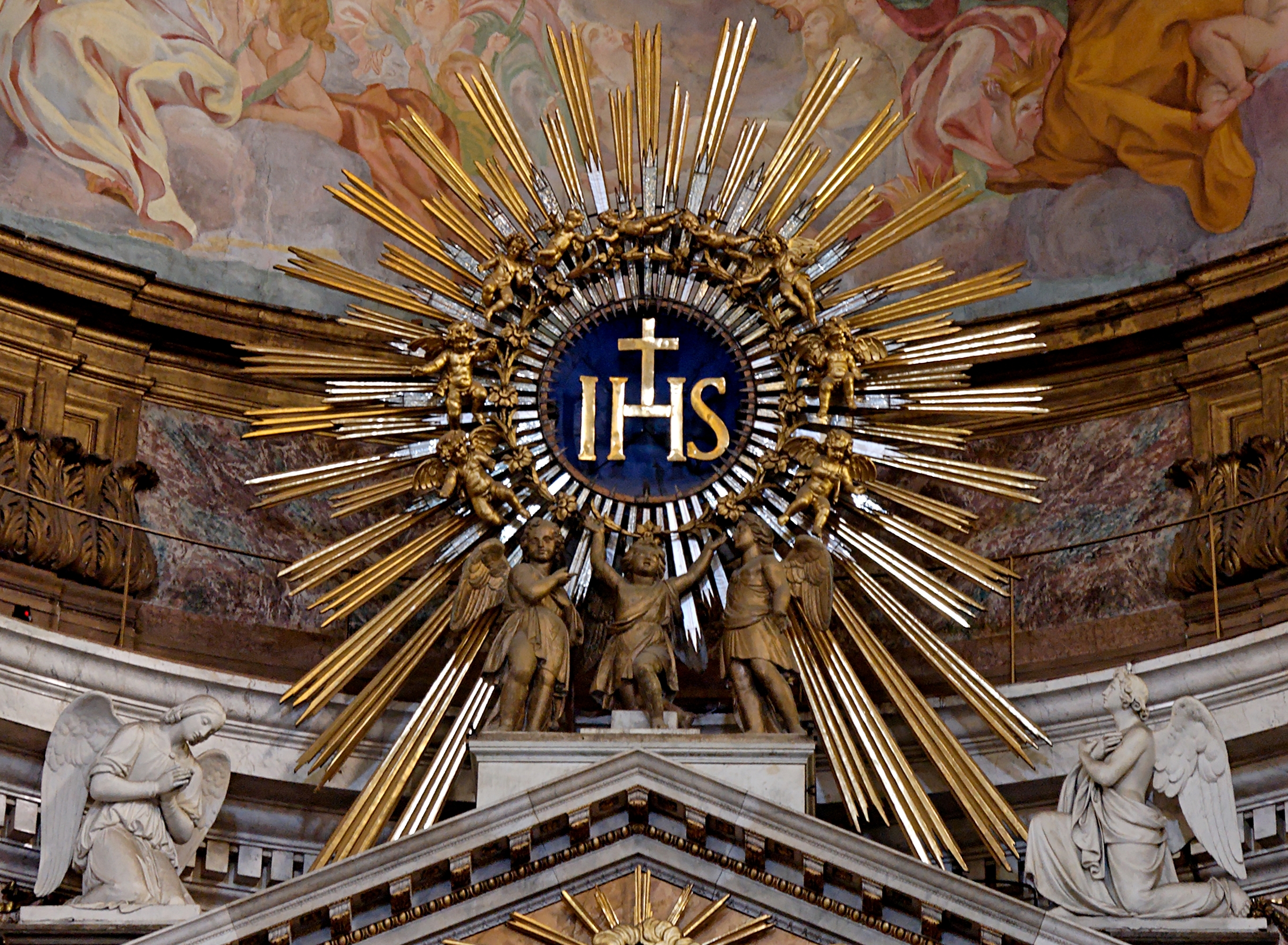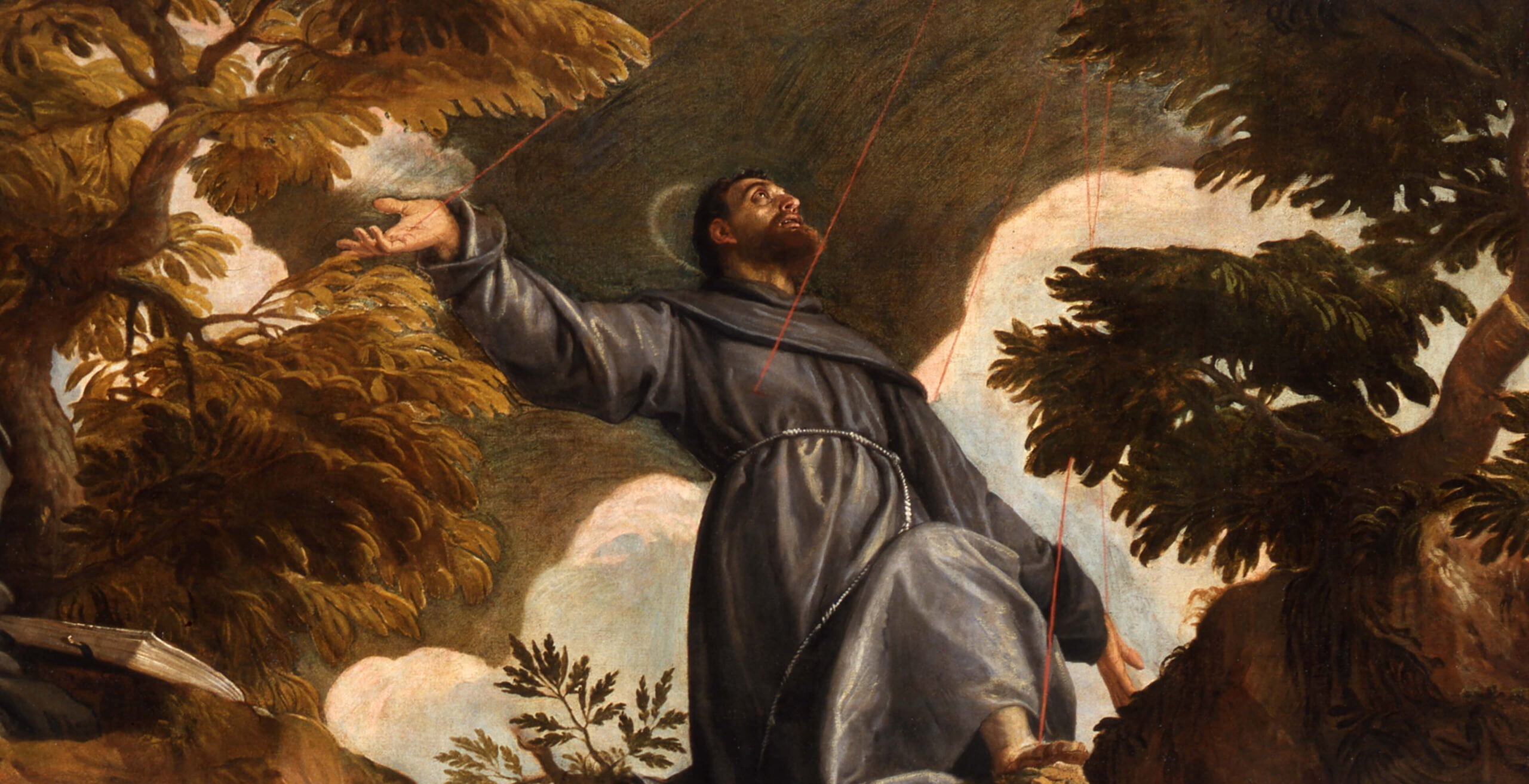Tempo di lettura: 9 minuti
Read the story of the Holy Name of Jesus
Summary
Roman Martyrology
In the Roman Martyrology, this memory is defined as follows: «Most Holy Name of Jesus, the only one in which, in heaven, on earth and under the earth, every knee bows to the glory of divine majesty».
These words are taken from St. Paul's Letter to the Philippians (2, 8-11): «…he humbled himself by becoming obedient to the point of death and death on a cross. Therefore God exalted him and gave him the name which is above every name; so that at the name of Jesus every knee should bow in heaven, on earth and under the earth; and let every tongue proclaim that Jesus Christ is Lord, to the glory of God the Father."
The veneration of the Holy Name of Jesus began "de facto” in the early days of Church, as shown by the Christograms that decorate early Christian art.
Only in the 14th century, however, did it acquire liturgical importance, giving rise to a real cult, thanks to the commitment to its diffusion and its official recognition made by St. Bernardino of Siena and his followers, among including especially the blessed Alberto da Sarteano and Bernardino da Feltre.
When in the OT a prophet speaksin the name of Yahweh, it is understood that it is Yahweh who speaks through him. A messenger he speaks in the name of the one who sends him: it is the name of the sender that gives him authority. Very often, however, the Name of God is a metonym for God himself.
The work of God is therefore attributed to the Name of God (see the Psalms: 20.2; 54.3; 89.25). The name expresses divine power. For example, the name of God is David's weapon against Goliath: «David replied to the Philistine: “You come to me with the sword, with the spear and with the spear. I come to you in the name of the Lord of hosts, God of the hosts of Israel, whom you have insulted. On this very day, the Lord will cause you to fall into my hands. I will strike you down and cut off your head from your body, and I will throw the dead bodies of the Philistine army to the birds of the air and to the wild beasts; all the earth will know that there is a God in Israel.”» (1 Sam 17, 45-46)
Even for the writers of the NT the name of God is the equivalent of the divine person but applied to Jesus. In his name wonders are performed (Mk 16,17-18), the sick are healed (Acts 3,6). The invocation of his name is a source of salvation, remission of sins and eternal life (Acts 4.12; 1 John 2.12; 1 Cor 6.11; John 3.18; 1 John 5.13). The name of Jesus is "above any other name” (Phil 2, 8-11; Eph 1, 21; Heb 1,4).
Saint Francis
During the Middle Ages, devotion to the name of Jesus was very present in some Doctors of the Church, including Bernard of Clairvaux, and in St. Francis of Assisi. It was then practiced throughout the Sienese area, a few decades before the preaching of Bernardino da Siena, by the Gesuati (a lay fraternity dedicated to assisting the sick, founded in 1360 by the blessed Sienese Giovanni Colombini), who were so called because of their frequent repeat the name of Jesus.
Bernardino of Siena
The development, however, of a liturgy associated with the name of Jesus is a consequence of the preaching of St. Bernardino of Siena, who focused his effort to renew the Church on the name of Jesus, underlining the centrality of the person of Jesus Christ. In submission to the name of Jesus, Bernardino resolved the concrete and current problems of practical and social life: political hatred, family ethics, the duties of merchants, slander, etc.
In antithesis to the heraldic insignia of the noble families, whose disputes bloodied the Italian cities, Bernardino invented a brightly colored coat of arms, with which to represent the name of Jesus. It consisted of the trigram IHS, inscribed in a golden sun with twelve rays meandering above a blue shield.
This solar symbolism associated with Christ, however, aroused some opposition, but was approved by Pope Nicholas V (Tommaso Parentucelli, 1447-1455) in 1450 due to its deep roots in the OT and thanks to the passionate defense by St. Giovanni da Capistrano.
The liturgy of the name of Jesus became widespread at the end of the 15th century. In 1530, Pope Clement VII (Giulio de' Medici, 1523-1534) authorized the Franciscan Order to recite the Office of the Holy Name of Jesus; and the celebration, now present in various locations, was extended to the entire Church by Pope Innocent XIII (Michelangelo Conti, 1721-1724) in 1721.
The Society of Jesus
The Society of Jesus became a supporter of worship and doctrine, taking the Bernardinian trigram as its emblem and dedicating its most beautiful and largest churches, built throughout the world, to the Holy Name of Jesus.
The day of celebration varied between the first Sundays of January, ending on January 2nd until the 1970s, when it was suppressed.
Saint John Paul II (Karol Józef Wojtyła, 1978-2005) restored the optional memory in the Roman Calendar to January 3.
Meaning of the name Jesus: “God saves, Savior” (Hebrew).

source © gospeloftheday.org
Jesus means “God saves”. The Name of God revealed in the bush to Moses on Sinai, in Jesus shines in all his clarity: God is the Savior of all.
The origin of the Name
Yeshu'ain Aramaic (the language of Jesus);Iesous, in Greek;Jesusin Latin. In Italian Jesus.
On January 3rd we remember the Holy Name of Jesus, which "... who is above every name, so that at the name of Jesus every knee should bow, in heaven, on earth and under the earth, and every tongue should proclaim: Jesus Christ is Lord!” (Phil 2:9-11).
The name of Jesus
Secondo l’evangelista Matteo, il nome fu imposto al figlio partorito da Maria da Giuseppe, come annunciato dall’angelo in sogno (1,20ss).
Un nome frutto dell’obbedienza: in osservanza alla tradizione ebraica, l’8° giorno dopo la nascita, il neonato veniva circonciso e gli veniva dato il nome che quasi sempre conteneva un’invocazione a Dio. Anche a Gesù, ebreo di nascita perfettamente inserito nella storia del popolo ebraico tocca un nome che lo pone nell’alleanza tra Abramo e Dio.
The evangelist Matthew, in chapter 1, presents us with the genealogy of Jesus which must be interpreted in light of the annotation through which the evangelist clearly draws attention: "The sum of all the generations from Abraham to David is fourteen; from David to the deportation of Babylon it is still fourteen; from the deportation of Babylon to Jesus is fourteen” (1,17).
Through this framework Matthew follows in a certain sense Genesis 2,4a "This is…the book of genesis”, almost as if to project Jesus against the background of the origins. In this way the historical origin of Jesus is linked more directly to that of David on which the hope of the coming of the Messiah for all peoples is grafted.
Whoever calls on the name of Jesus will be saved
In this way Jesus is presented as the one who fulfills the messianic promises: “Whoever believes in him will not be disappointed…Whoever calls on the name of the Lord will be saved” (Acts 2:20; Rom 10:12-13).
L’esperienza di Pietro e Giovanni, descritta negli Atti, ne è un ulteriore esempio:
"Peter and John went up to the temple for the three o'clock prayer in the afternoon. Usually a man, crippled since birth, was brought; they placed it every day near the gate of the temple called Beautiful, to ask for alms from those who entered the temple.
He, seeing Peter and John who were about to enter the temple, begged them for alms. Then, fixing their gaze on him, Peter together with John said: "Look towards us". And he turned to look at them, hoping to receive something from them.
Peter said to him: “I have neither silver nor gold, but what I have I give to you:in the name of Jesus Christ, the Nazarene, arise and walk!”.
He took him by the right hand and lifted him up. Suddenly his feet and ankles strengthened and, jumping up, he started walking; him and entered the temple with them walking, jumping and praising God” (Acts 3:1-8).

The devotion of Saint Bernardino of Siena
A coltivare particolare devozione al Santissimo Nome di Gesù fu in particolare il francescano san Bernardino da Siena (1380-1444), che recupera il Trigramma IHS – già presente nel III secolo fra le abbreviazioni utilizzate nei manoscritti greci del Nuovo Testamento – e pone come sfondo il sole raggiante a 12 raggi in campo azzurro.
Tenuto conto che “IHS” sono le prime tre lettere del nome Gesù in greco, il messaggio che ne deriva è che Gesù è il “sole” che irradia la sua luce attraverso i Dodici apostoli, cioè la Chiesa.
This symbol became a sort of "signature" of Saint Bernardino and the Franciscan family.

The sweetness of the Name in Saint Francis
Le catechesi attorno al santissimo Nome di Gesù permettevano di aiutare i fedeli a fissare lo sguardo del cuore al mistero stesso di Gesù, a cominciare dalla povertà della grotta in cui nacque.
In this regard it is useful to remember the experience of Saint Francis of Assisi, who - the Franciscan sources tell us - "He was really very busy with Jesus. He always carried Jesus in his heart, Jesus on his lips, Jesus in his ears, Jesus in his eyes, Jesus in his hands, Jesus in all his other members. Often, when he wanted to name Christ Jesus fervent with celestial love, he called him "the Child of Bethlehem", and he pronounced that name "Bethlehem" filling his mouth with voice and even more with tender affection, producing a sound like sheep bleating. And every time he said «Child of Bethlehem" or "Jesus", passed his tongue over his lips, almost as if to taste and retain all the sweetness of those words".
In 1530 Pope Clement VII authorized the Franciscan order to recite the Office of the Holy Name of Jesus.
Mentre la Compagnia di Gesù (i gesuiti) contribuisce a sostenerne il culto, prendendo il trigramma (IHS) come emblema della Compagnia.
From 1721 the liturgical memory was extended to the whole Church by Pope Innocent XIII; in the 1970s it was suppressed and Saint John Paul II inserted it again into the Roman Martyrology on January 3rd.
source © Vatican News – Dicasterium pro Communicatione









